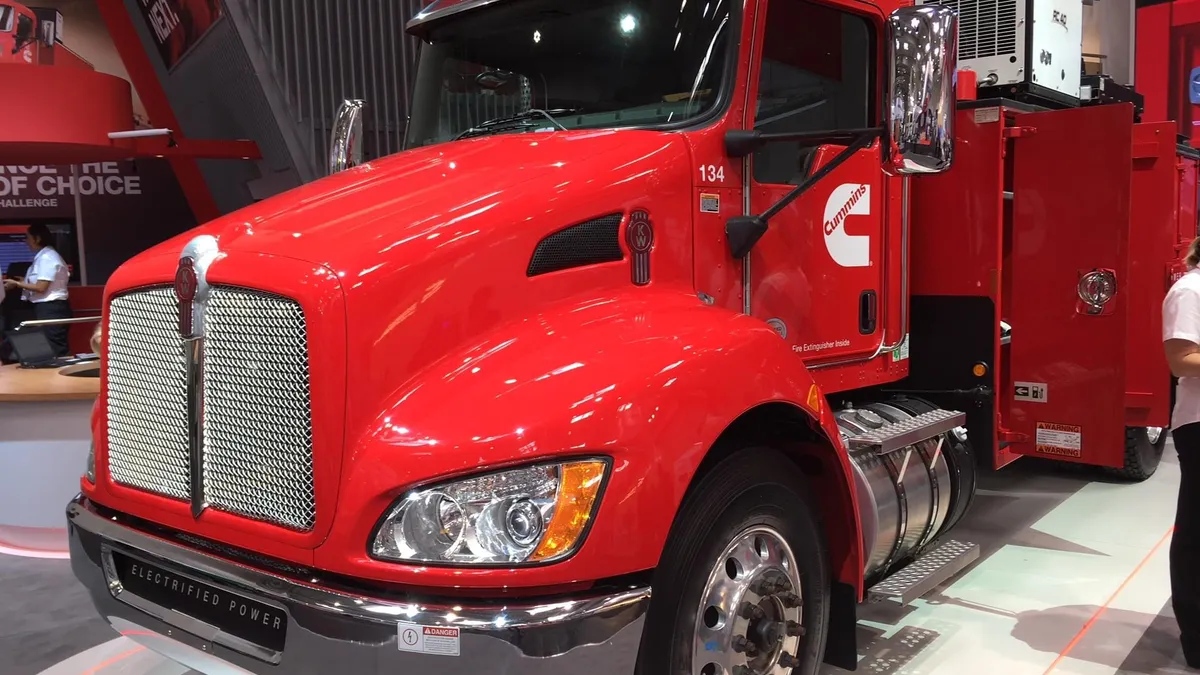Dive Brief:
- Cummins is turning its attention to low-emissions, hybrid and electric vehicle powertrains, debuting new technology concepts at the IAA Commercial Vehicles Show.
- The manufacturer developed a concept system that would reduce emissions of nitrogen oxides and particulate matter from diesel vehicles "while simultaneously improving fuel efficiency," Tim Proctor, Cummins Executive Director of Product Management & Market Innovation, said in a news release.
- Cummins also debuted hybrid electric powertrains known as PowerDrive, which allows vehicles to shift between purely electric for 50-mile ranges or shorter and hybrid for to make trips more than 300 miles.
Dive Insight:
To reduce the footprint across the supply chain, several pieces of the puzzle must develop sustainability solutions that fit together. Not only do carriers need to invest in environmentally friendly fleets, but original equipment manufacturers (OEMs) need suppliers to provide the components and technology to build low-emissions and electric vehicles (EVs).
Cummins is playing its part by developing engine components and powertrains that lower emissions.
The manufacturer's PowerDrive is already on the market and tackles some of the challenges with EVs' short driving range. For longer distances, the engine can switch into a hybrid mode.
With lower emissions come lower fuel costs. Cummins estimates its PowerDrive systems can reduce fuel costs by 40% to 80%, depending on which drive modes are used.
"While Cummins has a vigorous electrification program underway, our other key message at IAA is that the diesel engine is not standing still," Proctor said.
Diesel vehicles continue to be prominent in the trucking market. According to data from IHS Markit, registrations of commercial diesel vehicles increased nearly 15% in the first half of 2018.
But diesel prices have been rising steadily since the beginning of 2016, according to the U.S. Energy Information Administration. In February 2016, the average diesel price was $1.99 per gallon. Now in September 2018, it's $3.26 per gallon.
Although still in the concept phase and not ready for mass market just yet, Cummins is working on technologies that would instantaneously convert nitrogen oxide emissions into clean gas and also improve fuel efficiency, resulting in fuel cost savings for carriers.
"Increases in diesel and gas prices are encouraging greater acceptance of alternatively fueled vehicles," Dawn Brusseau, associate director of commercial vehicle solutions for IHS Markit, said in a statement.
Commercial purchases of alternative fuel vehicles grew 29% in the first half of 2018.














